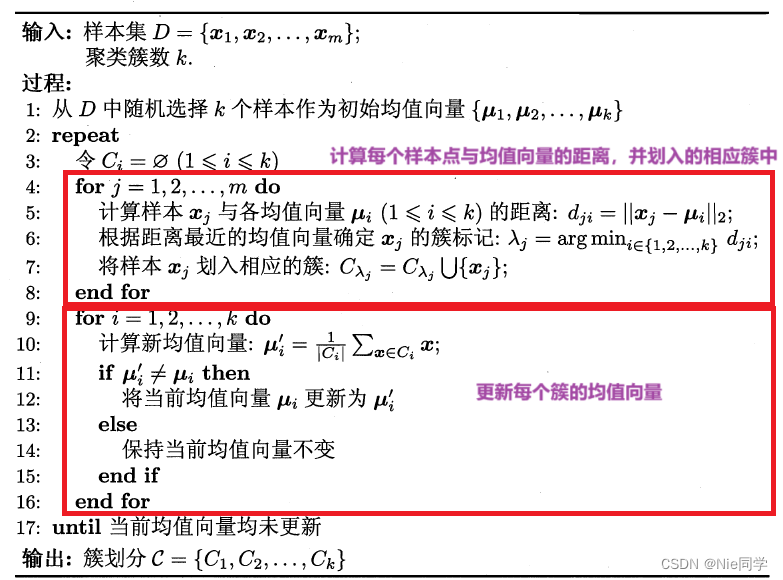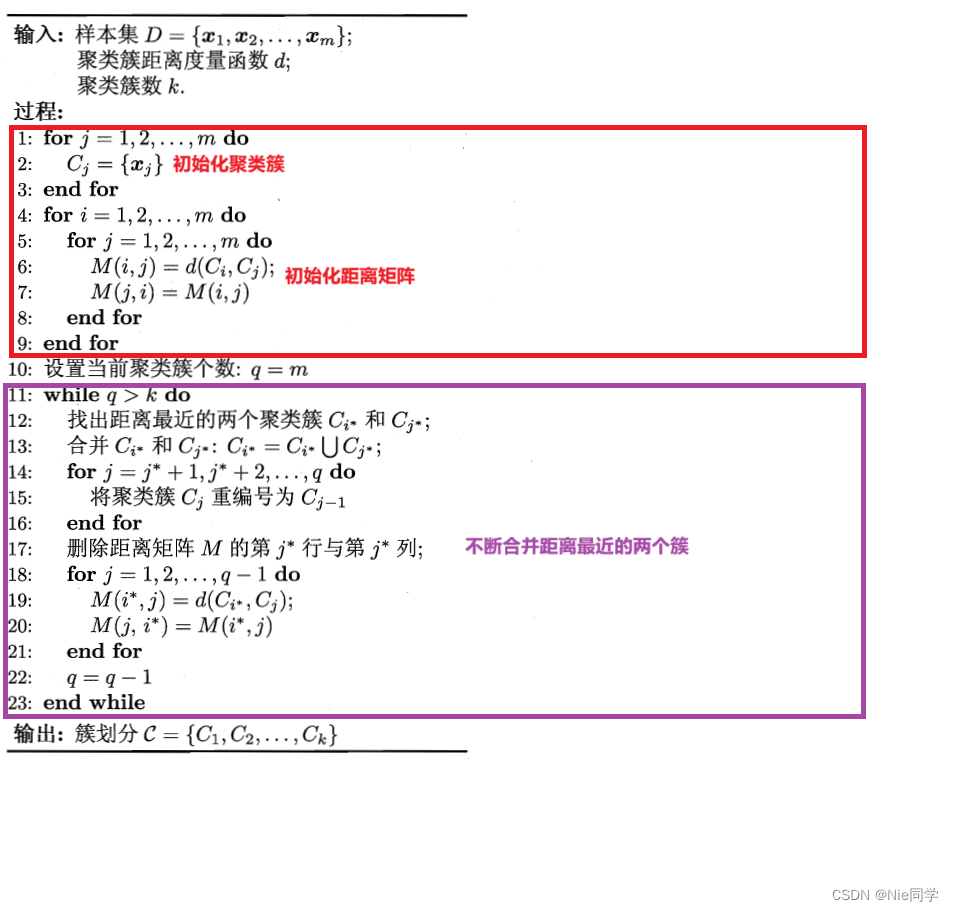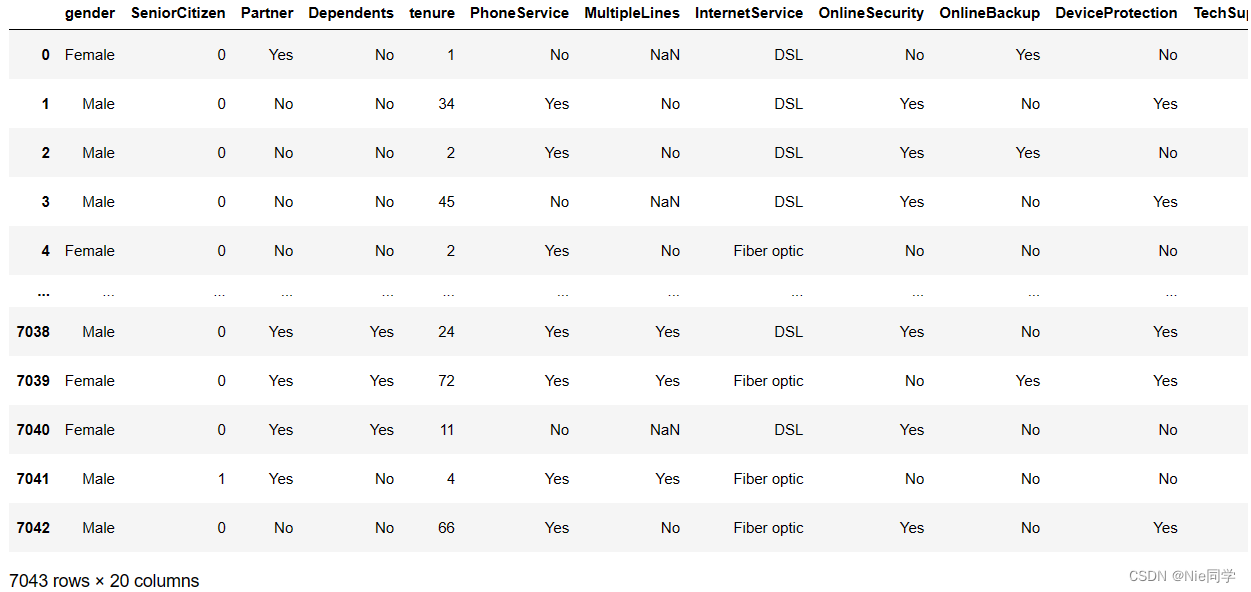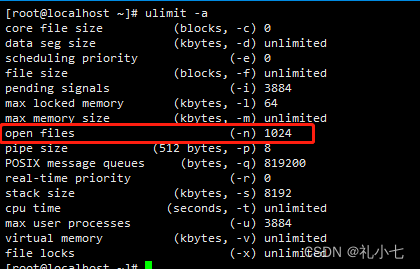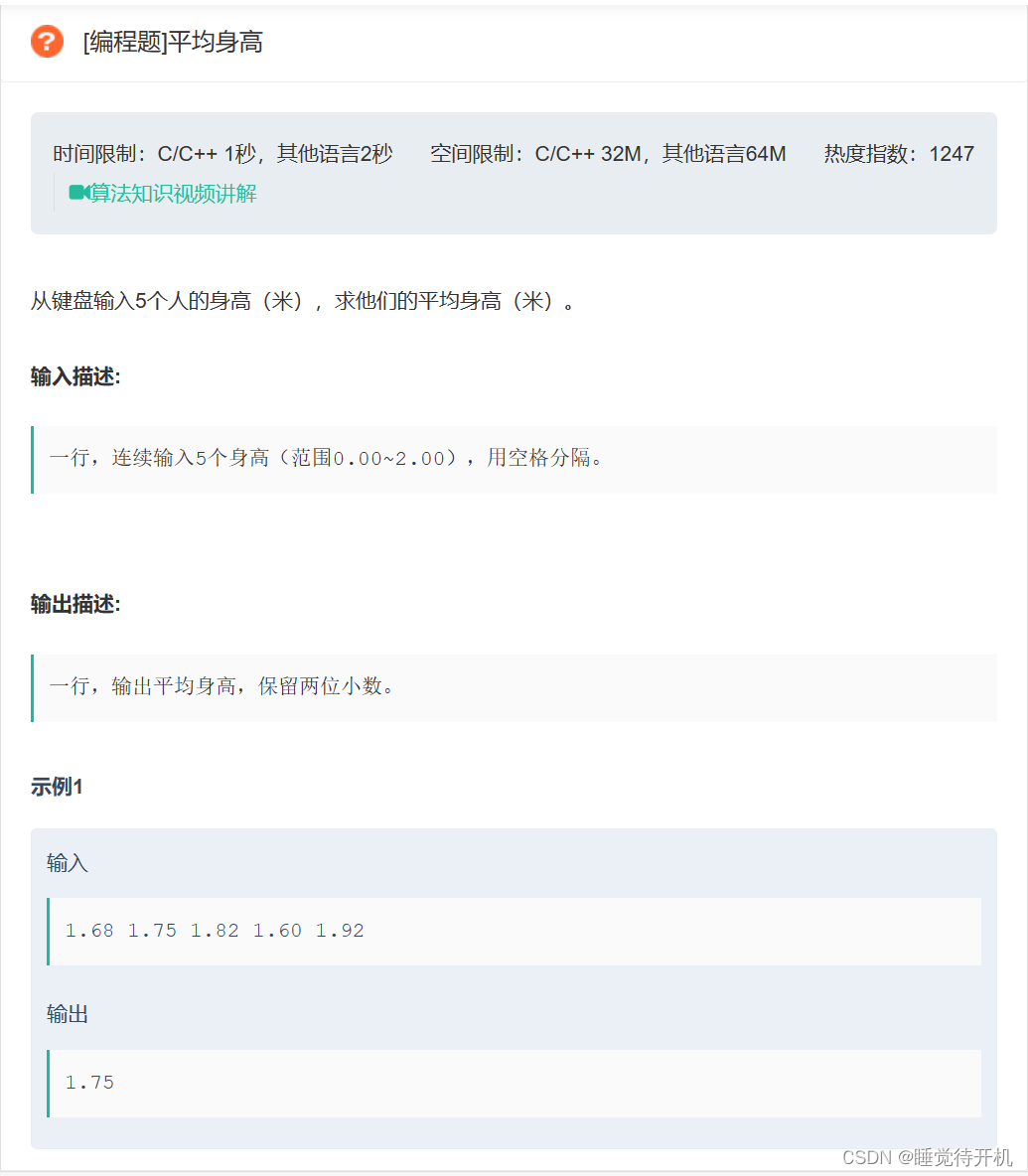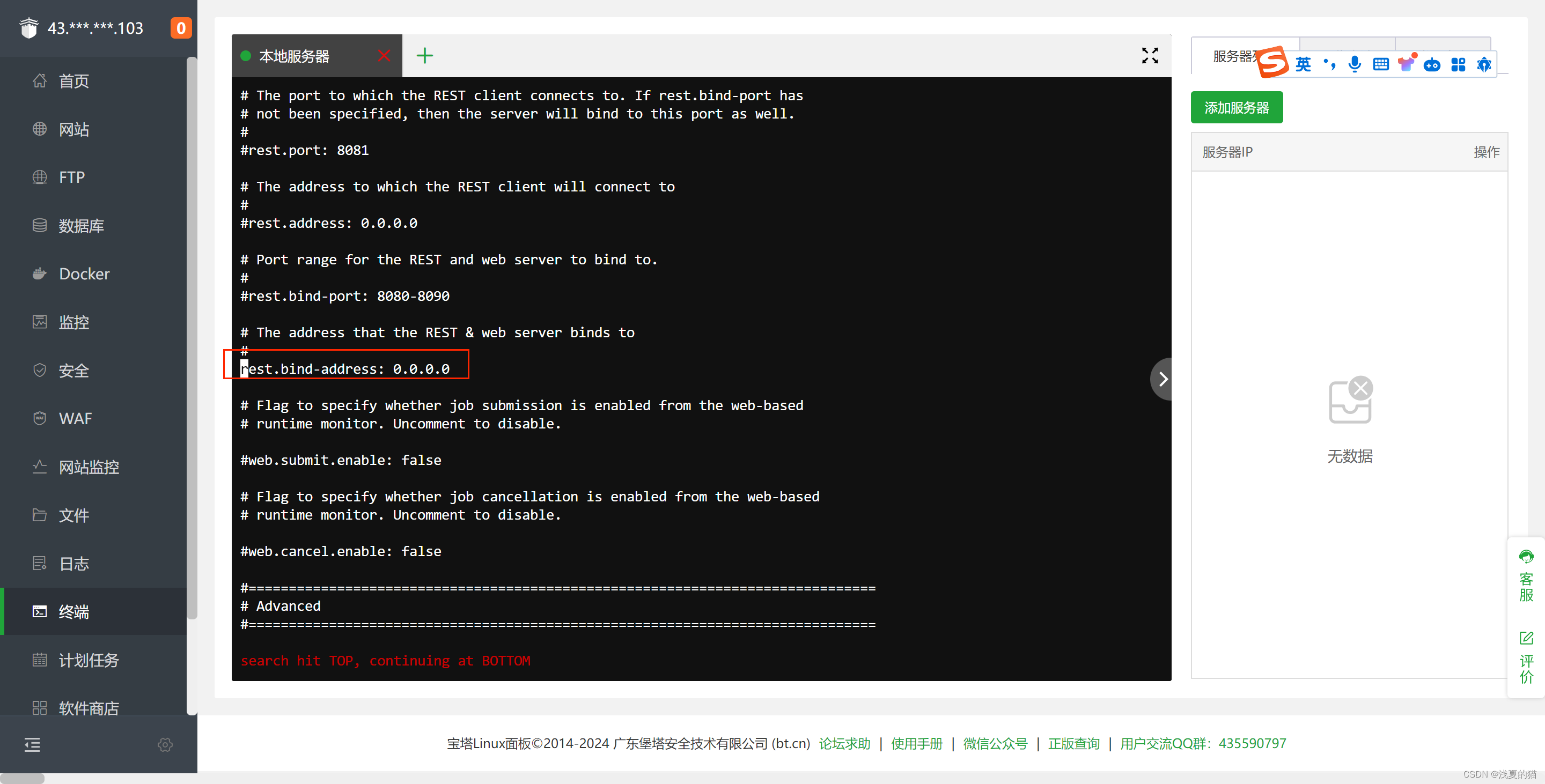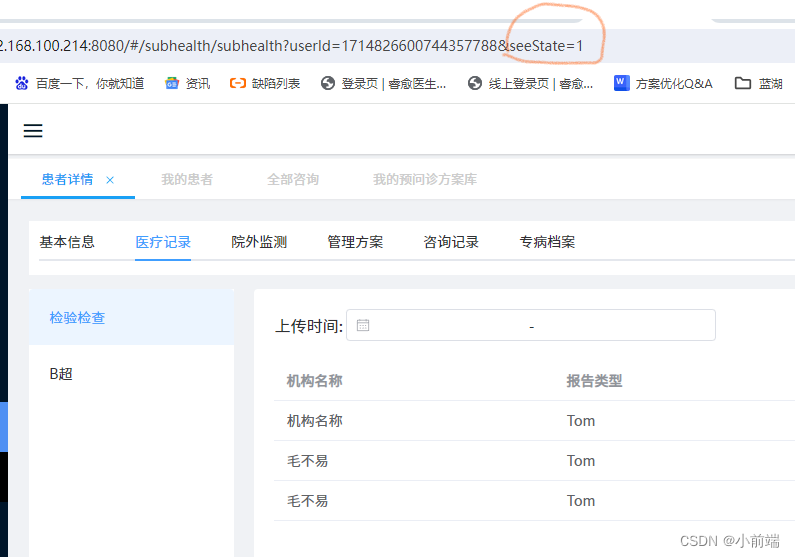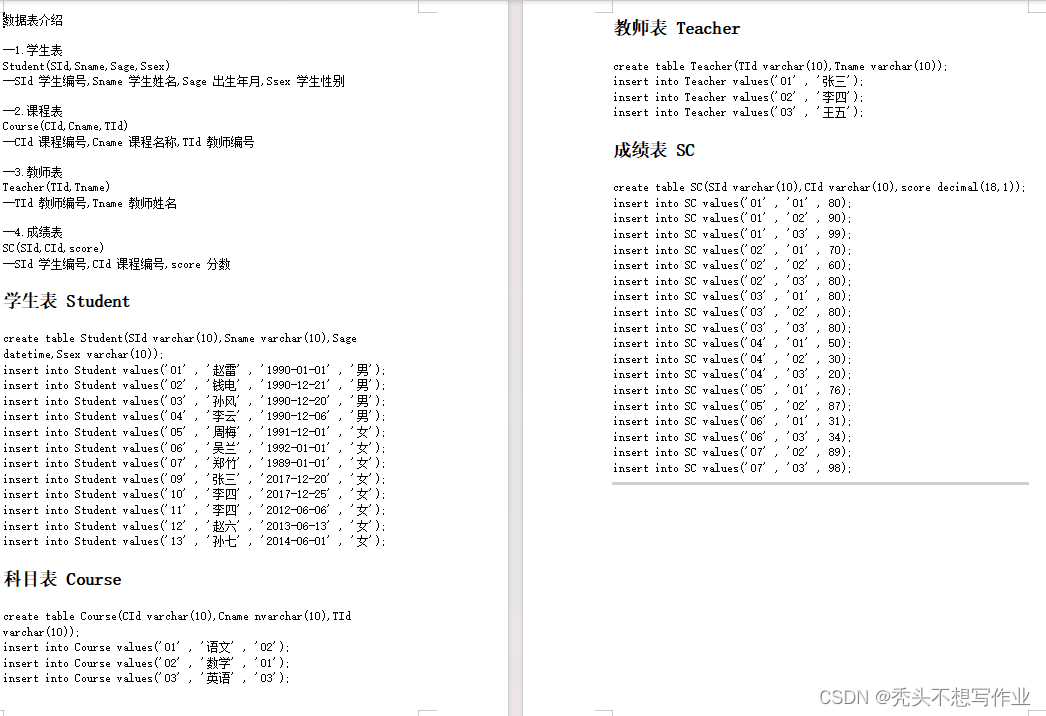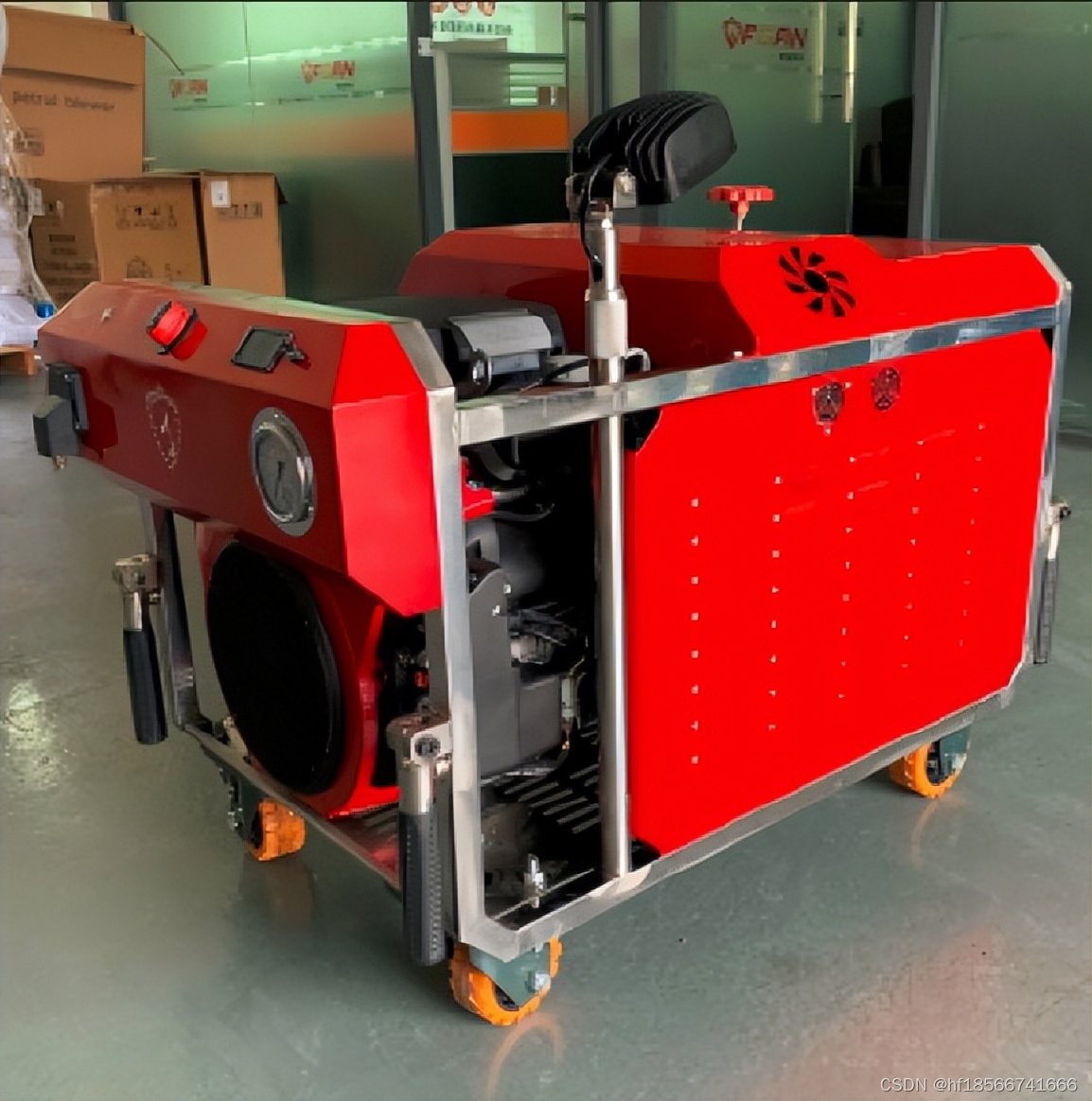文章目录
引言
Boosting是一种集成学习方法,旨在通过整合多个弱学习器来构建一个强学习器。其核心思想是迭代训练模型,关注之前被错误分类的样本,逐步提升整体性能。Boosting的代表算法包括AdaBoost、Gradient Boosting和XGBoost等,在实际应用中取得了广泛成功。
AdaBoost算法
AdaBoost是一种集成学习算法,其基本结构如下:
初始化权重: 为训练集中的每个样本初始化权重。
迭代训练弱学习器: 通过多次迭代,训练简单的弱学习器,每一轮都会调整样本的权重,更关注之前分类错误的样本。
更新样本权重: 根据当前弱学习器的性能,更新样本的权重,使得在下一轮迭代中更关注之前分类错误的样本。
组合弱学习器: 将每个弱学习器的输出按权重线性组合,构建最终的强分类器。
这一过程重复进行,直到达到预定的迭代次数或所有样本都被正确分类。
下面是AdaBoost的结构图示意图:
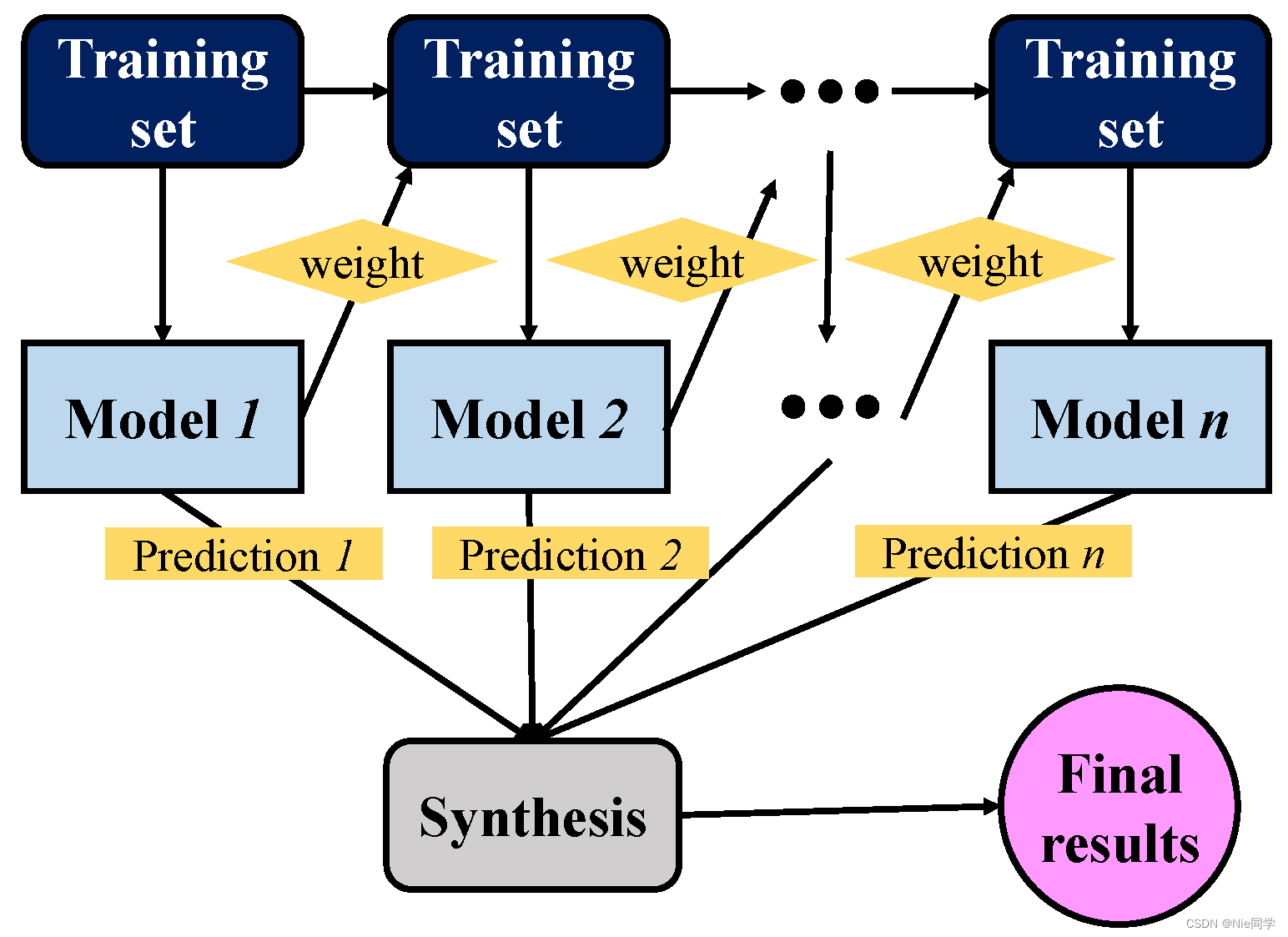
AdaBoost算法流程如下图所示:

下面我们采用基于加性模型的推导方式,即基学习器的线性组合:
H ( x ) = ∑ t = 1 T α t h t ( x ) (1) H(x)=\sum_{t=1}^T\alpha_th_t(x) \tag{1} H(x)=t=1∑Tαtht(x)(1)
其最小化指数损失函数为:
ℓ e x p ( H ∣ D ) = E x ∼ D [ e − f ( x ) H ( x ) ] (2) \ell_{exp}(H|\mathcal{D})=\mathbb{E}_x\sim \mathcal{D}[e^{-f(x)H(x)}] \tag{2} ℓexp(H∣D)=Ex∼D[e−f(x)H(x)](2)
即 D [ e − f ( x ) H ( x ) ] \mathcal{D}[e^{-f(x)H(x)}] D[e−f(x)H(x)] 可以被理解为在分布 D \mathcal{D} D 下,函数 e − f ( x ) H ( x ) e^{-f(x)H(x)} e−f(x)H(x) 的期望值;其中 f ( x ) f(x) f(x)是真实值; H ( x ) H(x) H(x)为模型的预测值;
AdaBoost算法正确性说明
再此之前我们先把(2)式展开
- 对于离散型:
ℓ e x p ( H ∣ D ) = ∑ x D ( x ) e − f ( x ) H ( x ) (3) \ell_{exp}(H|\mathcal{D})=\sum_x \mathcal{D}(x) e^{-f(x)H(x)} \tag{3} ℓexp(H∣D)=x∑D(x)e−f(x)H(x)(3) - 对于连续型:
ℓ e x p ( H ∣ D ) = ∫ D ( x ) e − f ( x ) H ( x ) d x (4) \ell_{exp}(H|\mathcal{D})=\int \mathcal{D}(x) e^{-f(x)H(x)}dx \tag{4} ℓexp(H∣D)=∫D(x)e−f(x)H(x)dx(4)
以离散型为例,接着使用最小二乘法,使得 ℓ e x p \ell_{exp} ℓexp最小,即对 ℓ e x p \ell_{exp} ℓexp求对 H ( x ) H(x) H(x)的偏导有:
∂ ℓ exp ( H ∣ D ) ∂ H ( x ) = ∑ x ∂ D ( x ) e − f ( x ) H ( x ) ∂ H ( x ) = ∑ x − D ( x ) f ( x ) e − f ( x ) H ( x ) (5) \begin{aligned} \frac{\partial \ell_{\text{exp}}(H|\mathcal{D})}{\partial H(x)} &= \sum_x \frac{\partial \mathcal{D}(x) e^{-f(x)H(x)}}{\partial H(x)} \\ &= \sum_x-\mathcal{D(x)}f(x)e^{-f(x)H(x)} \\ \end{aligned} \tag{5} ∂H(x)∂ℓexp(H∣D)=x∑∂H(x)∂D(x)e−f(x)H(x)=x∑−D(x)f(x)e−f(x)H(x)(5)
又因为 f ( x ) ∈ { − 1 , + 1 } f(x)\in\{-1,+1\} f(x)∈{ −1,+1},所以式(5)可变形为:
∑ x − D ( x ) f ( x ) e − f ( x ) H ( x ) = − ∑ x D ( x ) e − H ( x ) + ∑ x D ( x ) e H ( x ) = − e − H ( x ) P ( f ( x ) = 1 ∣ x ) + e H ( x ) P ( f ( x ) = − 1 ∣ x ) (6) \begin{aligned} & \sum_x-\mathcal{D(x)}f(x)e^{-f(x)H(x)} \\ &= -\sum_x\mathcal{D}(x)e^{-H(x)}+\sum_x\mathcal{D}(x)e^{H(x)} \\ &= -e^{-H(x)} P(f(x)=1|x)+e^{H(x)}P(f(x)=-1|x) \end{aligned} \tag{6} x∑−D(x)f(x)e−f(x)H(x)=−x∑D(x)e−H(x)+x∑D(x)eH(x)=−e−H(x)P(f(x)=1∣x)+eH(x)P(f(x)=−1∣x)(6)
其中 P ( f ( x ) = 1 ∣ x ) P(f(x)=1|x) P(f(x)=1∣x)代表在数据集 x x x中好瓜的概率; P ( f ( x ) = − 1 ∣ x ) P(f(x)=-1|x) P(f(x)=−1∣x)代表在数据集 x x x中坏瓜的概率。
令(6)式为零可得:
H ( x ) = 1 2 ln P ( f ( x ) = 1 ∣ x ) P ( f ( x ) = − 1 ∣ x ) (7) H(x)=\frac{1}{2}\ln\frac{P(f(x)=1|x)}{P(f(x)=-1|x)} \tag{7} H(x)=21lnP(f(x)=−1∣x)P(f(x)=1∣x)(7)
又因为对于一个二分类问题 H ( x ) ∈ { − 1 , + 1 } H(x)\in\{-1,+1\} H(x)∈{ −1,+1},故可将(7)式简化,有:
s i g n ( H ( x ) ) = s i g n ( 1 2 ln P ( f ( x ) = 1 ∣ x ) P ( f ( x ) = − 1 ∣ x ) ) = { 1 , P ( f ( x ) = 1 ∣ x ) > P ( f ( x ) = − 1 ∣ x ) − 1 , P ( f ( x ) = 1 ∣ x ) < P ( f ( x ) = − 1 ∣ x ) = max y ∈ { − 1 , + 1 } P ( f ( x ) = y ∣ x ) (8) \begin{aligned} \mathrm{sign}(H(x))&=\mathrm{sign}(\frac{1}{2}\ln\frac{P(f(x)=1|x)}{P(f(x)=-1|x)})\\ &=\begin{cases} 1,\quad P(f(x)=1|x)>P(f(x)=-1|x)\\ -1,\quad P(f(x)=1|x)<P(f(x)=-1|x) \end{cases}\\ &=\underset{y\in\{-1,+1\}}{\text{max}} \quad P(f(x)=y|x) \end{aligned} \tag{8} sign(H(x))=sign(21lnP(f(x)=−1∣x)P(f(x)=1∣x))={ 1,P(f(x)=1∣x)>P(f(x)=−1∣x)−1,P(f(x)=1∣x)<P(f(x)=−1∣x)=y∈{ −1,+1}maxP(f(x)=y∣x)(8)
其中 max y ∈ { − 1 , + 1 } P ( f ( x ) = y ∣ x ) \underset{y\in\{-1,+1\}}{\text{max}} \quad P(f(x)=y|x) y∈{ −1,+1}maxP(f(x)=y∣x)该部分可以理解为在给定输入 x x x的情况下,选择具有最大条件概率的类别 y y y,即谁的概率大,就是什么类别。
这就意味着 s i g n ( H ( x ) ) \mathrm{sign}(H(x)) sign(H(x))达到了贝叶斯最优错误率。这说明指数损失函数是分类任务原本 0 / 1 0/1 0/1损失函数的一致性替代损失函数。因为该函数具有较好的数学性质,故用它来替代原本的 0 / 1 0/1 0/1损失函数是较好的选择。
AdaBoost算法如何解决权重更新问题?
在AdaBoost算法中,第一个基分类器 h 1 h_1 h1是通过直接将基学习器算法用于初始数据分布而得到的;此后的每次迭代地生成 h t h_t ht和 α t \alpha_t αt,当基分类器 h t h_t ht基于分布 D t \mathcal{D_t} Dt产生后,该分类器的权重应该使得 α t h t \alpha_th_t αtht最小化指数损失函数
ℓ e x p ( α t h t ∣ D t ) = E x ∼ D t [ e − f ( x ) α t h t ( x ) ] = ∑ x D t ( x ) e − f ( x ) α t h t ( x ) (9) \begin{aligned} \ell_{exp}(\alpha_th_t|\mathcal{D}_t)&=\mathbb{E}_x\sim \mathcal{D}_t[e^{-f(x)\alpha_th_t(x)}] \\ &= \sum_x\mathcal{D_t(x)}e^{-f(x)\alpha_th_t(x)} \\ \end{aligned} \tag{9} ℓexp(αtht∣Dt)=Ex∼Dt[e−f(x)αtht(x)]=x∑Dt(x)e−f(x)αtht(x)(9)
此时对于式(9)我们可以分类讨论: f ( x ) = h t ( x ) f(x)=h_t(x) f(x)=ht(x)和 f ( x ) ≠ h t ( x ) f(x)\ne h_t(x) f(x)=ht(x),有:
∑ x D t ( x ) e − f ( x ) α t h t ( x ) = e − α t P ( f ( x ) = h t ( x ) ∣ x ) + e α t P ( f ( x ) ≠ h t ( x ) ∣ x ) = e − α t P x ∼ D t [ f ( x ) = h t ( x ) ] + e α t P x ∼ D t [ f ( x ) ≠ h t ( x ) ] = e − α t ( 1 − ϵ t ) + e α t ϵ t (10) \begin{aligned} & \sum_x\mathcal{D_t(x)}e^{-f(x)\alpha_th_t(x)} \\ &=e^{-\alpha_t}P(f(x)=h_t(x)|x)+e^{\alpha_t}P(f(x)\ne h_t(x)|x)\\ &=e^{-\alpha_t}P_x\sim\mathcal{D}_t[f(x)=h_t(x)]+e^{\alpha_t}P_x\sim\mathcal{D}_t[f(x)\ne h_t(x)]\\ &=e^{-\alpha_t}(1-\epsilon_t)+e^{\alpha_t}\epsilon_t \end{aligned} \tag{10} x∑Dt(x)e−f(x)αtht(x)=e−αtP(f(x)=ht(x)∣x)+eαtP(f(x)=ht(x)∣x)=e−αtPx∼Dt[f(x)=ht(x)]+eαtPx∼Dt[f(x)=ht(x)]=e−αt(1−ϵt)+eαtϵt(10)
其中 ϵ t = P x ∼ D t [ f ( x ) ≠ h t ( x ) ] \epsilon_t=P_x\sim\mathcal{D}_t[f(x)\ne h_t(x)] ϵt=Px∼Dt[f(x)=ht(x)],考虑到指数损失函数对 α t \alpha_t αt(权重)求偏导有:
∂ ℓ exp ( α t h t ∣ D t ) ∂ α t = − e − α t ( 1 − ϵ t ) + e α t ϵ t (11) \frac{\partial \ell_{\text{exp}}(\alpha_th_t|\mathcal{D}_t)}{\partial \alpha_t}=-e^{-\alpha_t}(1-\epsilon_t)+e^{\alpha_t}\epsilon_t \tag{11} ∂αt∂ℓexp(αtht∣Dt)=−e−αt(1−ϵt)+eαtϵt(11)
令式(11)为零有:
α t = 1 2 ln ( 1 − ϵ t ϵ t ) (12) \alpha_t=\frac{1}{2}\ln(\frac{1-\epsilon_t}{\epsilon_t}) \tag{12} αt=21ln(ϵt1−ϵt)(12)
这正是算法流程图中第六行的权重更新公式。
AdaBoost算法如何解决调整下一轮基学习器样本分布问题?
AdaBoost算法在获得 H t − 1 H_{t-1} Ht−1之后的样本分布将进行调整,使得下一轮的基学习器 h t h_t ht能纠正 H t − 1 H_{t-1} Ht−1的一些错误,理想的 h t h_t ht能纠正 H t − 1 H_{t-1} Ht−1的全部错误,即最小化:
ℓ e x p ( H t − 1 + h t ∣ D ) = E x ∼ D [ e − f ( x ) ( H t − 1 ( x ) + h t ( x ) ) ] = E x ∼ D [ e − f ( x ) H t − 1 ( x ) e − f ( x ) h t ( x ) ] (13) \begin{aligned} \ell_{exp}(H_{t-1}+h_t|\mathcal{D})&=\mathbb{E}_x\sim \mathcal{D}[e^{-f(x)(H_{t-1}(x)+h_t(x))}] \\ &= \mathbb{E}_x\sim \mathcal{D}[e^{-f(x)H_{t-1}(x)}e^{-f(x)h_t(x)}] \\ \end{aligned} \tag{13} ℓexp(Ht−1+ht∣D)=Ex∼D[e−f(x)(Ht−1(x)+ht(x))]=Ex∼D[e−f(x)Ht−1(x)e−f(x)ht(x)](13)
注意到 f ( x ) f(x) f(x)和 h t ( x ) ∈ { − 1 , + 1 } h_t(x)\in\{-1,+1\} ht(x)∈{ −1,+1}故, f 2 ( x ) = h t 2 ( x ) = 1 f^2(x)=h^2_t(x)=1 f2(x)=ht2(x)=1,因为 e x ≈ 1 + x + x 2 2 ! + x 3 3 ! + x 4 4 ! + … e^x \approx 1 + x + \frac{x^2}{2!} + \frac{x^3}{3!} + \frac{x^4}{4!} + \ldots ex≈1+x+2!x2+3!x3+4!x4+…;故可对式(13)中的 e − f ( x ) h t ( x ) e^{-f(x)h_t(x)} e−f(x)ht(x)泰勒展开近似为:
ℓ e x p ( H t − 1 + h t ∣ D ) ≈ E x ∼ D [ e − f ( x ) H t − 1 ( x ) ( 1 − f ( x ) h t ( x ) ) + f 2 ( x ) h t 2 ( x ) 2 ) ] = E x ∼ D [ e − f ( x ) H t − 1 ( x ) ( 1 − f ( x ) h t ( x ) ) + 1 2 ) ] (14) \begin{aligned} \ell_{exp}(H_{t-1}+h_t|\mathcal{D})&\approx\mathbb{E}_x\sim \mathcal{D}[e^{-f(x)H_{t-1}(x)}(1-f(x)h_t(x))+\frac{f^2(x)h^2_t(x)}{2})] \\ &=\mathbb{E}_x\sim \mathcal{D}[e^{-f(x)H_{t-1}(x)}(1-f(x)h_t(x))+\frac{1}{2})] \end{aligned} \tag{14} ℓexp(Ht−1+ht∣D)≈Ex∼D[e−f(x)Ht−1(x)(1−f(x)ht(x))+2f2(x)ht2(x))]=Ex∼D[e−f(x)Ht−1(x)(1−f(x)ht(x))+21)](14)
于是,理想的基学习器
h t ( x ) = arg min h ℓ e x p ( H t − 1 + h ∣ D ) = arg min h E x ∼ D [ e − f ( x ) H t − 1 ( x ) ( 1 − f ( x ) h ( x ) ) + 1 2 ) ] (15) \begin{aligned} h_t(x)&=\underset{h}{\text{arg min}} \quad \ell_{exp}(H_{t-1}+h|\mathcal{D}) \\ &=\underset{h}{\text{arg min}} \quad \mathbb{E}_x\sim \mathcal{D}[e^{-f(x)H_{t-1}(x)}(1-f(x)h(x))+\frac{1}{2})] \\ \end{aligned} \tag{15} ht(x)=harg minℓexp(Ht−1+h∣D)=harg minEx∼D[e−f(x)Ht−1(x)(1−f(x)h(x))+21)](15)
因为式(15)中 ( 1 − f ( x ) h t ( x ) ) + 1 2 ) (1-f(x)h_t(x))+\frac{1}{2}) (1−f(x)ht(x))+21) 1 1 1和 1 2 \frac{1}{2} 21与最终结果无关,故可以省略,且-号变为+号将目标函数从求最小变成求最大值,故式(15)可简化为:
arg min h E x ∼ D [ e − f ( x ) H t − 1 ( x ) ( 1 − f ( x ) h ( x ) ) + 1 2 ) ] = arg max h E x ∼ D [ e − f ( x ) H t − 1 ( x ) f ( x ) h ( x ) ] = arg max h E x ∼ D [ e − f ( x ) H t − 1 ( x ) E x ∼ D [ e − f ( x ) H t − 1 ( x ) ] f ( x ) h ( x ) ] (16) \begin{aligned} &\underset{h}{\text{arg min}} \quad \mathbb{E}_x\sim \mathcal{D}[e^{-f(x)H_{t-1}(x)}(1-f(x)h(x))+\frac{1}{2})] \\ &=\underset{h}{\text{arg max}} \quad \mathbb{E}_x\sim \mathcal{D}[e^{-f(x)H_{t-1}(x)}f(x)h(x)] \\ &=\underset{h}{\text{arg max}} \quad \mathbb{E}_x\sim \mathcal{D}[\frac{e^{-f(x)H_{t-1}(x)}}{\mathbb{E}_x\sim \mathcal{D}[e^{-f(x)H_{t-1}(x)}]}f(x)h(x)] \end{aligned}\tag{16} harg minEx∼D[e−f(x)Ht−1(x)(1−f(x)h(x))+21)]=harg maxEx∼D[e−f(x)Ht−1(x)f(x)h(x)]=harg maxEx∼D[Ex∼D[e−f(x)Ht−1(x)]e−f(x)Ht−1(x)f(x)h(x)](16)
注意到 E x ∼ D [ e − f ( x ) H t − 1 ( x ) ] \mathbb{E}_x\sim \mathcal{D}[e^{-f(x)H_{t-1}(x)}] Ex∼D[e−f(x)Ht−1(x)]是一个常数。令 D t \mathcal{D}_t Dt表示一个分布,使其更符合概率密度函数的定义:
D t = D ( x ) e − f ( x ) H t − 1 ( x ) E x ∼ D [ e − f ( x ) H t − 1 ( x ) ] (17) \mathcal{D_t}=\frac{\mathcal{D(x)}e^{-f(x)H_{t-1}(x)}}{\mathbb{E}_x\sim \mathcal{D}[e^{-f(x)H_{t-1}(x)}]} \tag{17} Dt=Ex∼D[e−f(x)Ht−1(x)]D(x)e−f(x)Ht−1(x)(17)
其中 D t ( x ) \mathcal{D_t}(x) Dt(x)表示未来的分布函数, D ( x ) D(x) D(x)表示过去的分布函数。
根据数学期望的定义,等价于:
h t ( x ) = arg max h E x ∼ D [ e − f ( x ) H t − 1 ( x ) E x ∼ D [ e − f ( x ) H t − 1 ( x ) ] f ( x ) h ( x ) ] = arg max h E x ∼ D t [ f ( x ) h ( x ) ] (18) \begin{aligned} h_t(x)&=\underset{h}{\text{arg max}} \quad \mathbb{E}_x\sim \mathcal{D}[\frac{e^{-f(x)H_{t-1}(x)}}{\mathbb{E}_x\sim \mathcal{D}[e^{-f(x)H_{t-1}(x)}]}f(x)h(x)]\\ &=\underset{h}{\text{arg max}} \quad \mathbb{E}_x\sim \mathcal{D_t}[f(x)h(x)] \end{aligned}\tag{18} ht(x)=harg maxEx∼D[Ex∼D[e−f(x)Ht−1(x)]e−f(x)Ht−1(x)f(x)h(x)]=harg maxEx∼Dt[f(x)h(x)](18)
由于 f ( x ) , h ( x ) ∈ { − 1 , + 1 } f(x),h(x)\in \{-1,+1\} f(x),h(x)∈{ −1,+1},有:
f ( x ) h ( x ) = 1 − 2 χ ( f ( x ) ≠ h ( x ) ) (19) f(x)h(x)=1-2\chi{(f(x)\ne h(x))} \tag{19} f(x)h(x)=1−2χ(f(x)=h(x))(19)
其中 χ ( f ( x ) ≠ h ( x ) ) \chi{(f(x)\ne h(x))} χ(f(x)=h(x))的定义如下:
χ ( f ( x ) ≠ h t ( x ) ) = { 1 如果 f ( x ) ≠ h ( x ) 0 如果 f ( x ) = h ( x ) (20) \chi{(f(x) \ne h_t(x))} = \begin{cases} 1 & \text{如果 } f(x) \ne h(x) \\ 0 & \text{如果 } f(x) = h(x) \end{cases} \tag{20} χ(f(x)=ht(x))={ 10如果 f(x)=h(x)如果 f(x)=h(x)(20)
则理想的基学习器为:
h t ( x ) = arg min h E x ∼ D t [ χ ( f ( x ) ≠ h ( x ) ) ] (21) h_t(x)=\underset{h}{\text{arg min}} \quad \mathbb{E}_x\sim \mathcal{D_t}[\chi(f(x)\ne h(x))] \tag{21} ht(x)=harg minEx∼Dt[χ(f(x)=h(x))](21)
考虑到 D t \mathcal{D_t} Dt与 D t + 1 \mathcal{D_{t+1}} Dt+1的关系有:
D t + 1 ( x ) = D ( x ) e − f ( x ) H t ( x ) E x ∼ D [ e − f ( x ) H t ( x ) ] = D ( x ) e − f ( x ) ( H t − 1 ( x ) + α t h t ( x ) ) E x ∼ D [ e − f ( x ) H t ( x ) ] = D ( x ) e − f ( x ) H t − 1 ( x ) e − f ( x ) α t h t ( x ) E x ∼ D [ e − f ( x ) H t ( x ) ] = D ( x ) e − f ( x ) H t − 1 ( x ) e − f ( x ) α t h t ( x ) E x ∼ D [ e − f ( x ) H t − 1 ( x ) ] ⋅ E x ∼ D [ e − f ( x ) H t − 1 ( x ) ] E x ∼ D [ e − f ( x ) H t ( x ) ] = D t ( x ) ⋅ e − f ( x ) α t h t ( x ) E x ∼ D [ e − f ( x ) H t − 1 ( x ) ] E x ∼ D [ e − f ( x ) H t ( x ) ] (22) \begin{aligned} \mathcal{D_{t+1}}(x)&=\frac{\mathcal{D(x)}e^{-f(x)H_{t}(x)}}{\mathbb{E}_x\sim \mathcal{D}[e^{-f(x)H_{t}(x)}]} \\ &=\frac{\mathcal{D(x)}e^{-f(x)(H_{t-1}(x)+\alpha_th_t(x))}}{\mathbb{E}_x\sim \mathcal{D}[e^{-f(x)H_{t}(x)}]} \\ &= \frac{\mathcal{D(x)}e^{-f(x)H_{t-1}(x)}e^{-f(x)\alpha_th_t(x)}}{\mathbb{E}_x\sim \mathcal{D}[e^{-f(x)H_{t}(x)}]} \\ &=\frac{\mathcal{D(x)}e^{-f(x)H_{t-1}(x)}e^{-f(x)\alpha_th_t(x)}}{\mathbb{E}_x\sim \mathcal{D}[e^{-f(x)H_{t-1}(x)}]}\cdot \frac{\mathbb{E}_x\sim \mathcal{D}[e^{-f(x)H_{t-1}(x)}]}{\mathbb{E}_x\sim \mathcal{D}[e^{-f(x)H_{t}(x)}]}\\ &=\mathcal{D_t(x)} \cdot e^{-f(x)\alpha_th_t(x)}\frac{\mathbb{E}_x\sim \mathcal{D}[e^{-f(x)H_{t-1}(x)}]}{\mathbb{E}_x\sim \mathcal{D}[e^{-f(x)H_{t}(x)}]} \end{aligned} \tag{22} Dt+1(x)=Ex∼D[e−f(x)Ht(x)]D(x)e−f(x)Ht(x)=Ex∼D[e−f(x)Ht(x)]D(x)e−f(x)(Ht−1(x)+αtht(x))=Ex∼D[e−f(x)Ht(x)]D(x)e−f(x)Ht−1(x)e−f(x)αtht(x)=Ex∼D[e−f(x)Ht−1(x)]D(x)e−f(x)Ht−1(x)e−f(x)αtht(x)⋅Ex∼D[e−f(x)Ht(x)]Ex∼D[e−f(x)Ht−1(x)]=Dt(x)⋅e−f(x)αtht(x)Ex∼D[e−f(x)Ht(x)]Ex∼D[e−f(x)Ht−1(x)](22)
其中 E x ∼ D [ e − f ( x ) H t − 1 ( x ) ] E x ∼ D [ e − f ( x ) H t ( x ) ] \frac{\mathbb{E}_x\sim \mathcal{D}[e^{-f(x)H_{t-1}(x)}]}{\mathbb{E}_x\sim \mathcal{D}[e^{-f(x)H_{t}(x)}]} Ex∼D[e−f(x)Ht(x)]Ex∼D[e−f(x)Ht−1(x)]是常数。这就是AdaBoost算法流程图中第7行的样本分布更新公式。
AdaBoost算法总结
需要注意的是,AdaBoost算法对于无法接受带权样本的基学习算法,可通过重采样法来处理,即在每一轮学习中,根据样本分布对训练集进行重新采样,再用重采样而得到的样本集对基学习器进行训练。
偏差-方差分解是解释模型在预测中的性能时的一种常用方法。在这个角度来看,Boosting算法(例如AdaBoost)可以被解释为一个降低偏差并提高模型复杂度的方法。
偏差(Bias): 表示模型的预测值与实际值的差异。高偏差意味着模型对训练数据的拟合不足。在Boosting中,通过迭代训练弱学习器,并对先前模型分类错误的样本进行更多关注,模型逐渐减小了偏差。每个弱学习器可能拟合不足,但通过组合它们,整个模型能够更好地适应训练数据。
方差(Variance): 表示模型对训练数据的敏感性。高方差意味着模型对训练数据的小扰动很敏感,可能导致对新数据的泛化能力较差。Boosting通过降低弱学习器的方差来提高整个模型的泛化能力。每个弱学习器都是一个简单的模型,通常是一个深度较浅的决策树桩,因此具有较低的方差。
在Boosting中,每一轮迭代都会调整样本的权重,使得模型更加关注先前分类错误的样本。这种调整增加了模型对先前被错误分类的样本的拟合程度,降低了偏差。与此同时,通过使用多个弱学习器的组合,整体模型具有较低的方差,更有助于泛化到新数据。
总体而言,Boosting通过对高偏差、低方差的弱学习器的集成,实现了偏差-方差的权衡,提高了整体模型的性能和泛化能力。
实验分析
这个数据集包含了工作经验得分、技能熟练度得分、沟通能力得分、学历水平得分以及录取标签。我们的目标是利用工作经验、技能熟练度、沟通能力和学历等属性信息,通过机器学习模型来预测一个人是否被录取。
import pandas as pd
from sklearn.model_selection import train_test_split
from sklearn.ensemble import AdaBoostClassifier
from sklearn.tree import DecisionTreeClassifier
from sklearn.metrics import accuracy_score
# 读取数据
data = pd.read_csv('data/adaboost_recruitment_dataset_scores.csv')
data
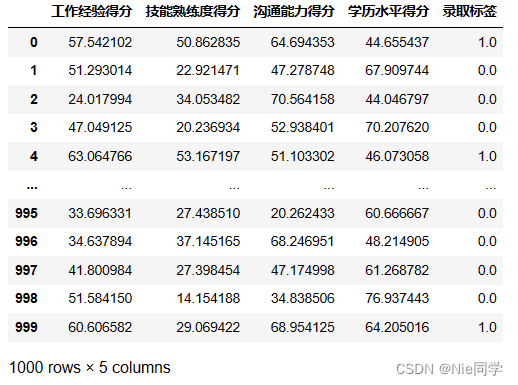
# 分离特征和标签
X = data.drop('录取标签', axis=1)
y = data['录取标签']
# 将数据分为训练集和测试集
X_train, X_test, y_train, y_test = train_test_split(X, y, test_size=0.2, random_state=42)
用决策树算法
# 创建决策树分类器
decision_tree_clf = DecisionTreeClassifier(max_depth=1, random_state=42)
# 训练模型
decision_tree_clf.fit(X_train, y_train)
# 在测试集上进行预测
y_pred_decision_tree = decision_tree_clf.predict(X_test)
# 评估准确性
decision_tree_accuracy = accuracy_score(y_test, y_pred_decision_tree)
print(f'准确性: {
decision_tree_accuracy:.2f}')
准确性: 0.87
用AdaBoost算法
# 创建 AdaBoostClassifier 的实例,使用决策树作为基分类器
base_classifier = DecisionTreeClassifier(max_depth=1)
adaboost_clf = AdaBoostClassifier(base_classifier, n_estimators=60, random_state=42)
# 训练模型
adaboost_clf.fit(X_train, y_train)
# 在测试集上进行预测
y_pred_adaboost = adaboost_clf.predict(X_test)
# 评估准确性
adaboost_accuracy = accuracy_score(y_test, y_pred_adaboost)
print(f'准确性: {
adaboost_accuracy:.2f}')
准确性: 0.92
绘制评价图像
import matplotlib.pyplot as plt
import seaborn as sns
from sklearn.metrics import confusion_matrix, classification_report
plt.rcParams['font.sans-serif'] = ['SimHei'] # 设置中文字体为黑体
plt.rcParams['axes.unicode_minus'] = False # 解决坐标轴负号'-'显示为方块的问题
# 绘制单一决策树的混淆矩阵
conf_matrix_decision_tree = confusion_matrix(y_test, y_pred_decision_tree)
plt.figure(figsize=(12, 5))
plt.subplot(1, 2, 1)
sns.heatmap(conf_matrix_decision_tree, annot=True, fmt='d', cmap='Blues', xticklabels=['负类', '正类'], yticklabels=['负类', '正类'])
plt.xlabel('预测标签')
plt.ylabel('真实标签')
plt.title('决策树混淆矩阵')
# 绘制 AdaBoost 的混淆矩阵
conf_matrix_adaboost = confusion_matrix(y_test, y_pred_adaboost)
plt.subplot(1, 2, 2)
sns.heatmap(conf_matrix_adaboost, annot=True, fmt='d', cmap='Blues', xticklabels=['负类', '正类'], yticklabels=['负类', '正类'])
plt.xlabel('预测标签')
plt.ylabel('真实标签')
plt.title('AdaBoost混淆矩阵')
plt.tight_layout()
plt.show()
# 打印单一决策树的分类报告
print("单一决策树分类报告:\n", classification_report(y_test, y_pred_decision_tree))
# 打印 AdaBoost 的分类报告
print("AdaBoost分类报告:\n", classification_report(y_test, y_pred_adaboost))
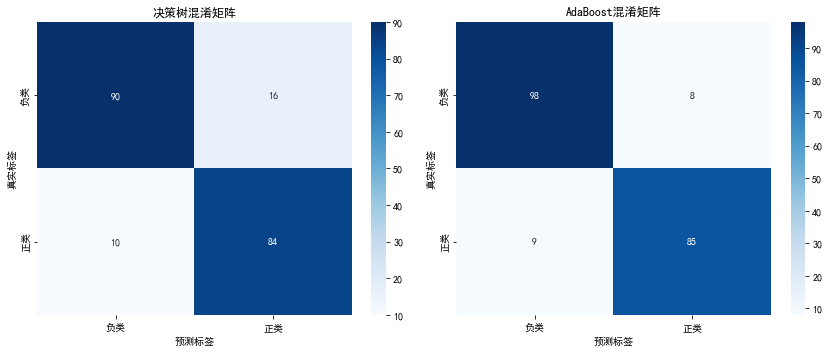
单一决策树分类报告:
precision recall f1-score support
0.0 0.90 0.85 0.87 106
1.0 0.84 0.89 0.87 94
accuracy 0.87 200
macro avg 0.87 0.87 0.87 200
weighted avg 0.87 0.87 0.87 200
AdaBoost分类报告:
precision recall f1-score support
0.0 0.92 0.92 0.92 106
1.0 0.91 0.90 0.91 94
accuracy 0.92 200
macro avg 0.91 0.91 0.91 200
weighted avg 0.91 0.92 0.91 200
根据上述分析报告,可知AdaBoost模型相对于单一决策树表现更佳,具有更高的准确度和综合指标。在AdaBoost中,对未被录取和被录取的预测精确性较高,同时识别实际样本的能力也表现出色,呈现出更好的泛化性能。



